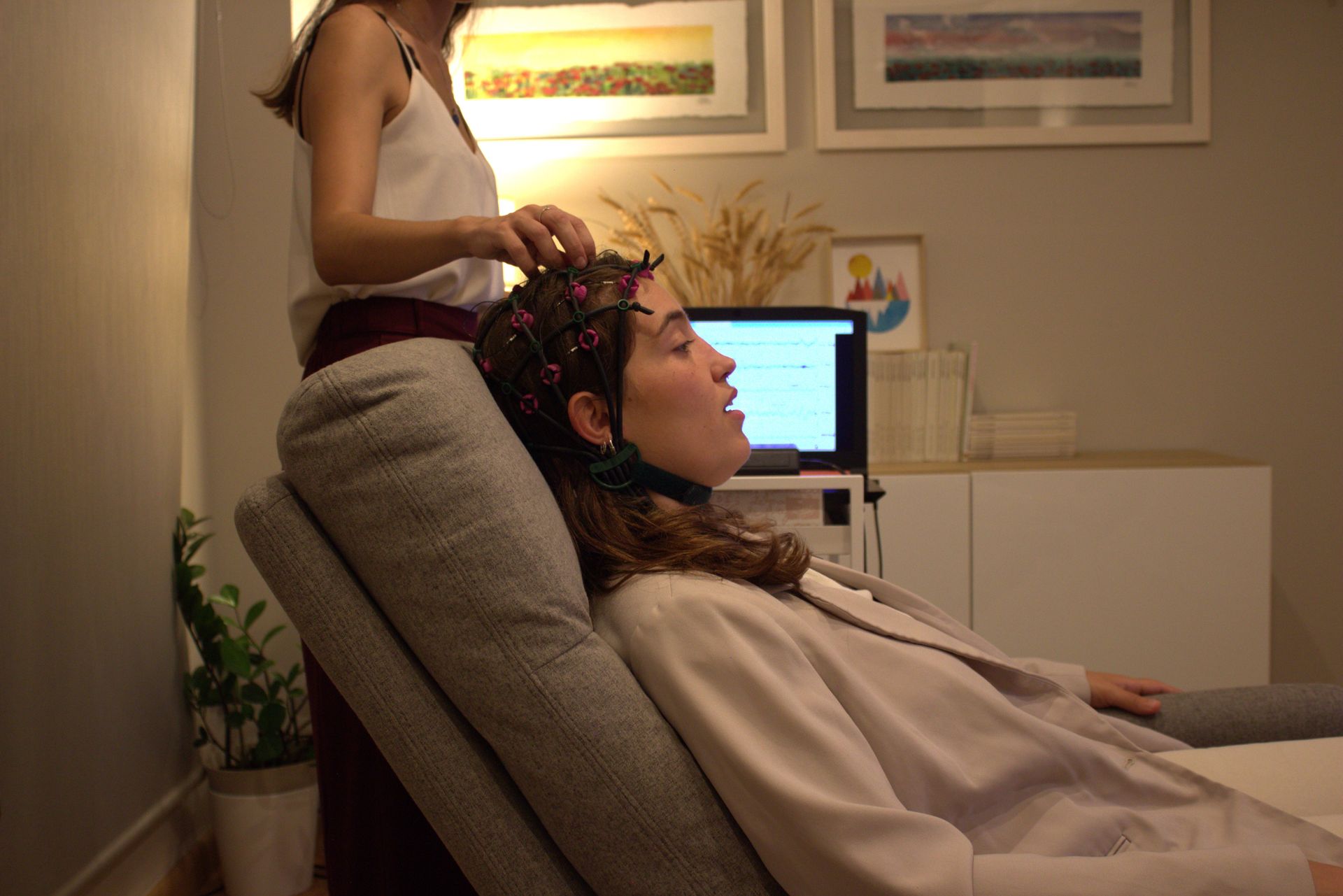Neurofeedback
Neurofeedback is the process by which the brain learns to function at its full potential
Simple and effective
Personalized training
Each training session is personalized and based on each person's qEEG (brain map).
Long-term benefits
Long-lasting results.
It is not invasive
No medication is required for neurofeedback. It is a non-invasive and painless procedure.
Notify
Short and enjoyable sessions. Improve your potential without exhausting your energy or lowering your self-esteem.
Improved attention and emotional well-being
According to qEEG (brain mapping) we can improve attention, verbal fluency, emotional regulation, study speed...etc.
Neurofeedback means feedback of brain activity. Neurofeedback treatment consists of training to regulate brain activity toward more functional patterns: states of tranquility, improved sleep, lower anxiety levels, improved impulse control and emotional regulation, etc.
This training is non-invasive and requires no medication. An electroencephalogram (EEG) is used to identify imbalances in brain activity that may be associated with the main symptoms or difficulties. Based on this data, a personalized training program is designed to regulate the imbalances identified in the brain map (image).
Personalized neurofeedback training uses the same sensors as the assessment, activating only those that measure brain activity related to the imbalances identified in the brain map. This allows us to provide real-time feedback to the brain, enabling it to self-regulate its activity toward more beneficial parameters.
Why does neurofeedback work?
The mechanisms of action of neurofeedback training are based on neuroscience and the psychology of behavioral learning.
Homeostasis
It is the process by which the body always tries to maintain a stable internal balance in order to function properly, even though what happens outside or inside changes.
Neuronal plasticity
It's the brain's ability to change, adapt, and learn throughout life. It means that our neurons can create new connections or strengthen existing ones when we practice something, such as neurofeedback.
Procedural learning
Learning is implicit, that is, the brain learns the procedure of regulating its own activity when it reaches harmful levels of electrical distribution.
What mechanisms of action underlie Neurofeedback training?
Neuronal plasticity allows the activity of different neuronal networks to be modulated towards more functional activation parameters (concentration, calmness, absence of crises, regulation of the circadian cycle, among others).
Neurofeedback training not only alleviates symptoms and difficulties, but also promotes functions in people without difficulties who wish to improve their abilities such as attention, memory, organization and planning, decision making, as well as emotional regulation.
Neurofeedback training has been used with very positive results in insomnia, epilepsy, cognitive difficulties associated with strokes and head trauma, migraine, ADHD (inattentive, hyperactive and mixed types), learning problems, reading and writing difficulties, aggression, depression, anxiety, panic attacks and difficulties regulating intense emotional states, among others.
Furthermore, at Neuropsiembra you can find cognitive assessments for children with attention difficulties, learning disabilities, reading comprehension problems, language difficulties, and IQ tests, just as you would for adults. Similarly, assessments are conducted to evaluate the presence of mild to moderate cognitive impairment. Both assessments are performed using standardized tests validated in the Spanish population. These assessments can be carried out individually or in conjunction with brain mapping or EEG.
Consult the scientific evidence on neurofeedback:
Du Bois, N., Bigirimana, AD, Korik, A., Gaju Kéthina, L., Rutembesa, E., Mutabaruka, J., et al. (2021).Neurofeedback with low-cost, wearable EEG reduces symptoms in chronic PTSD.Journal of Affective Disorders, 295:1319–1334.
Krepel, N., Egtberts, T., Sack, A. T., Heinrich, H., Ryan, M., & Arns, M. (2020).A multicenter effectiveness trial of QEEG-informed neurofeedback in ADHD: Replication and treatment prediction.NeuroImage: Clinical, 28:102399.
Nicholson, A. A., Ros, T., Densmore, M., Frewen, P. A., Neufeld, R. W. J., Théberge, J., et al. (2020).A randomized, sham-controlled trial of alpha-rhythm EEG neurofeedback in posttraumatic stress disorder.NeuroImage: Clinical (article in NeuroImage family; trial doble ciego con control sham).
Strehl, U., Aggensteiner, P., Wachtlin, D., et al. (2017).Neurofeedback of slow cortical potentials in children with Attention-Deficit/Hyperactivity Disorder: a multicenter randomized trial controlling for unspecific effects.Frontiers in Human Neuroscience, 11:135.



















